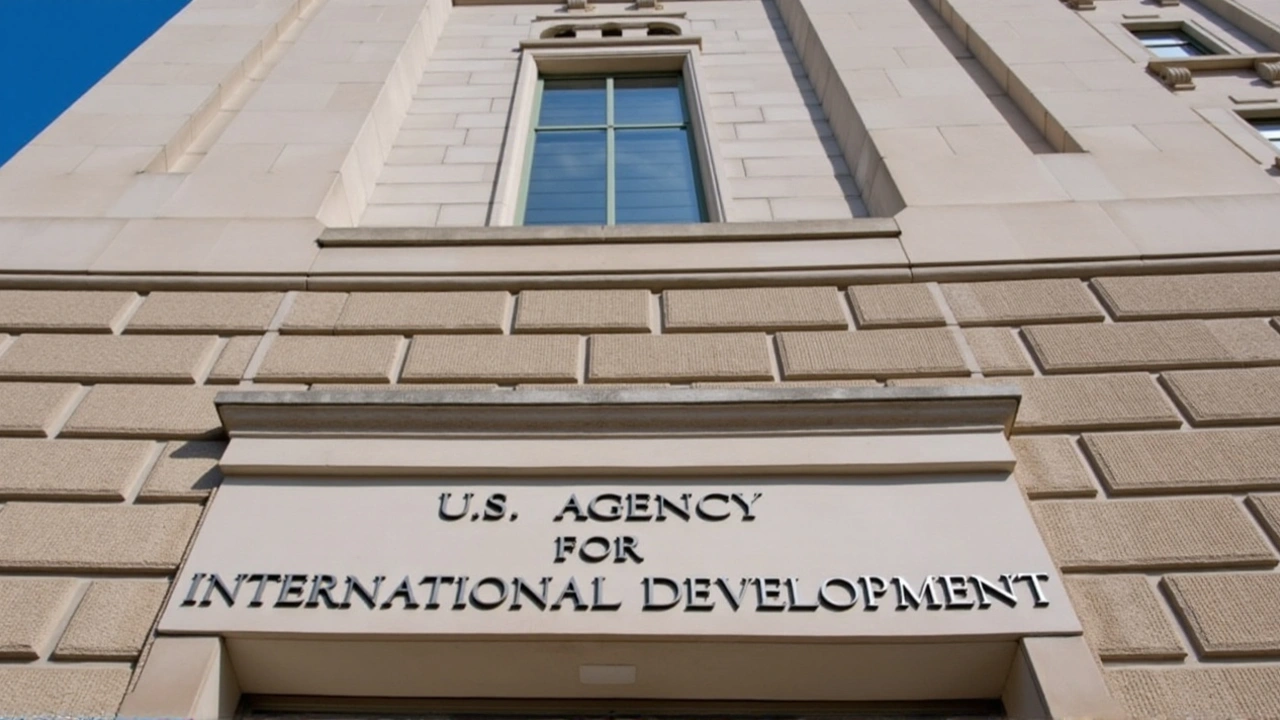The Executive Order and Its Immediate Implications
In a move that has set off alarm bells in the international development community, President Donald Trump has issued an executive order on January 20, 2025, titled 'Reevaluating and Realigning United States Foreign Aid.' This edict has essentially put a 90-day hold on foreign development assistance, pausing new commitments and disbursements of aid funds destined for foreign countries. The broad reach of this directive affects non-governmental organizations, international organizations, and contractors, who all depend heavily on these funds to operate in some of the world's most impoverished and unstable regions.
The order confers a great deal of responsibility onto the Secretary of State, mandating that no new obligations for foreign assistance are to be made during the review period. Existing assistance awards are also impacted, with the issuance of stop-work orders designed to halt any further progress on current projects. Such an across-the-board freeze not only affects the immediate beneficiaries of aid but also sends ripples through a broader ecosystem of development professionals and organizations worldwide.
Critical Elements of the Suspension and Potential Waivers
In its text, the executive order outlines several critical elements. Notably, the ability to grant waivers for the suspension of foreign assistance is limited to specific scenarios, such as providing foreign military financing for key allies like Israel and Egypt. Other exceptions include emergency food assistance and administrative expenses necessary to maintain the operation of U.S. direct-hire employees. However, all exceptions must comply with the overarching foreign policy goals outlined by the new administration. The Director of Foreign Assistance is granted authority to approve additional exceptions, though these must be meticulously aligned with the administration's priorities.
The suspension of the proposal review process for foreign assistance grants, subgrants, contracts, and subcontracts adds yet another layer of complexity to the scenario. This particular halt means that many projects in the pipeline, regardless of their stage of readiness or urgency, find themselves in limbo. It raises challenging questions about whether this methodical approach to pausing assistance unduly shackles the efforts of non-profits and other organizations that ring the bells of global humanitarian need.
Criticism and Questions of Legality
Opponents of the executive order argue that the action oversteps presidential authority, overshadowing Congress's constitutional role in approving foreign aid budgets and legislation. Historically, foreign aid has enjoyed bipartisan support as a critical arm of U.S. national security strategy, aimed at stabilizing regions and building alliances. Critics claim that the current action, by painting foreign aid with such a broad brush of skepticism and caution, could backfire by endangering both international goodwill and U.S. security interests.
Additionally, some legal scholars question whether a president even holds the power to dissolve a seminal government agency like USAID through an executive order, suggesting that such a step would require legislative action and felt consensus. Dissolving or fundamentally reshaping USAID could set a critical precedent, rewriting the modern history of how the U.S. engages with the world. It's a step that bears political, practical, and humanitarian consequences and is sure to engage discussion on power limits within the federal government.
The Impact on USAID and Worldwide Development Efforts
This move places considerable strain on USAID staff, many of whom are now sidelined or placed on administrative leave. Career staffers with deep ties to both the agency's mission and its global partnerships find themselves in precariously unstable positions. With the majority of leadership roles occupied by long-time agency professionals, question marks loom over USAID’s ability to influence policy direction or keep their projects rolling successfully under these new rules.
On the global front, the ripple effects of such a suspension could be palpable. Foreign development assistance is critical in meeting immediate humanitarian needs and facilitating long-term growth and stability in developing nations. Halting these efforts, even temporarily, may result in increased instability, economic stagnation, and a widening gap in essential healthcare and educational provisions.
In regions that rely on continuity and consistency from U.S. aid, the suspension could unravel years of progress, forcing partners to scramble to fill funding voids, possibly resulting in patched solutions that lack the long-range vision typically guided by USAID expertise.

The Broader Implications for Executive Power and Foreign Advocacy
This executive decision ushers in a new era of executive action with potential far-reaching implications. While some argue that aligning foreign aid with the administration’s policy goals represents a realignment of priorities, many worry that it represents a grave misunderstanding of the intricacies and nuance involved in executing development programs on a global scale. Such a broad-brush approach might effectively turn nuanced problems into unfathomable challenges. As attention shifts to the legislative arena, many anticipate an intense debate over executive power boundaries and the intricate balancing act required to maintain foreign advocacy in line with U.S. interests.
As this narrative unfolds over the coming months, one thing is sure: the reverberations of this executive order will not be confined to the halls of American governance. They will cross oceans, touch populations far from U.S. shores, and likely guide a new chapter in international development—its priorities, challenges, and enduring influence on the global stage.















